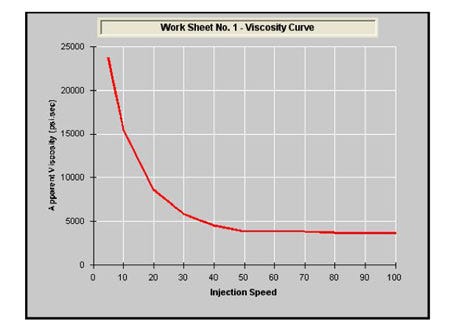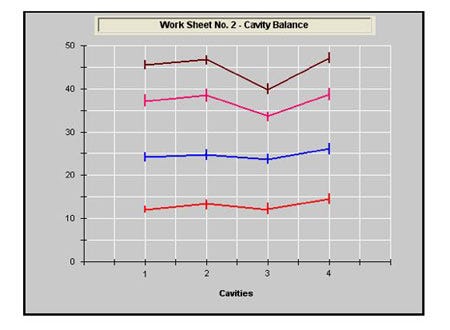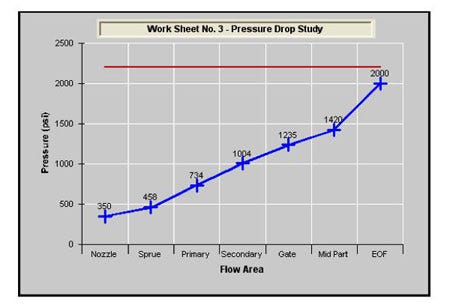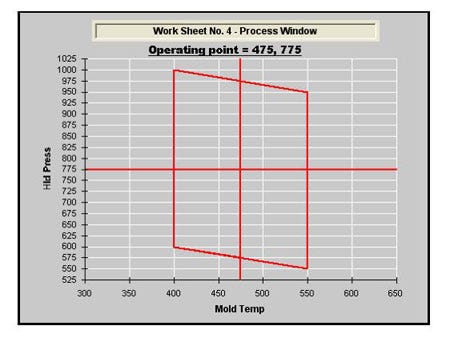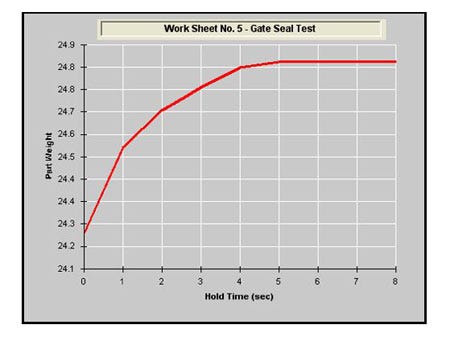Robust processing, Part 2: Scientific Molding and Design of Experiments
Part 1 of this article describes achieving aesthetic, dimensional, and control process windows, the building blocks of scientific molding, which is explained here, plus design of experiments (DOE) that confirm that your process is robust. —Suhas Kulkarni
May 19, 2009
Part 1 of this article describes achieving aesthetic, dimensional, and control process windows, the building blocks of scientific molding, which is explained here, plus design of experiments (DOE) that confirm that your process is robust. —Suhas Kulkarni
The aim of a molding operation should be to have an efficient process that molds parts consistently with the required quality. There are three types of consistencies that must be achieved. First, there is shot-to-shot consistency, when the parts molded during every cycle are identical in quality to the next cycle. Second, there must be cavity-to-cavity consistency, which is when each part from each cavity is identical to the parts from the other cavities. Third, there must be run-to-run consistency, when two production runs achieve the same quality with an identical molding process. When those three consistencies are achieved, we can say that the process and the quality are consistent.
|
The molding process is one of five factors that influences molded part quality. The other four are part design, plastic material, mold design and construction, and the molding machine (see Figure 1). Each of these plays an important role in achieving a consistent molding process. Of importance here is the molding process. The molding process consists of a number of parameters based on time, temperature, pressure, and speed. It is important that each of these parameters is optimized for the complete process to be optimized. The techniques of Scientific Molding and Design of Experiments are widely used for process and part quality optimization.
Scientific Molding
Scientific Molding is a technique used to optimize the molding process. The term Scientific Processing is a wider term that encompasses all the involved processes from when the plastic enters the molding facility as a pellet to when it exits as a finished part. There are six steps that are used to optimize the molding process:
1. Rheology study or viscosity study. A graph of the plastic viscosity is generated at the molding machine with the mold and the material under consideration (Figure 2). The viscosity remains fairly constant at higher injection speeds. The injection speed is set to a value in this section so that variations in the injection speeds have very little effect on the viscosity, ensuring a consistent fill.
2. Cavity balance. A graph of the weights of short shots from all of the cavities provides the information about the balance of fill between the cavities (Figure 3). A balanced fill between cavities ensures an equal amount of material packed into the cavities, resulting in cavity-to-cavity consistency.
3. Pressure-drop studies: A pressure-drop study is done to ensure that the screw has enough pressure to move at the set speed. When more than the available pressure is required, the screw slows down and the cavity fill becomes inconsistent. Such processes are called pressure-limited processes (Figure 4 shows a process that is close to being pressure limited).
4. Process window study: The process window study is performed to find the limits between which aesthetically acceptable parts can be molded, as was explained in Part 1 of this article. Typically, the two variables are holding pressure and melt or mold temperature. A center pressure is the most desirable to compensate for natural variations in the holding pressures (Figure 5 shows the aesthetically acceptable process window).
5. Gate seal study: As the plastic fills the mold through the gate, the velocity reduces, the melt cools down, and eventually the gate freezes off. Pressure must be applied to the screw till the gate freezes off to maintain cavity pressure and part weight consistency. A graph as shown in Figure 6 is generated and a hold time where the part weight is constant is chosen as the set hold time, again to ensure consistency.
6. Cooling time study: A cooling time study is performed to find out how fast a part can be molded without distortion or any other issues. Since the parts are available, a graph of the important dimensions can be plotted as a function of the cooling time (Figure 7).
The six-step process above is a process-optimizing technique—not a dimension-optimization technique. The goal is to establish a robust process regardless of the dimensions. Once the process is robust and stable, the steel must be adjusted to get the parts within the required specifications. This is why most moldmakers keep the steel “safe” and recut it after the process is developed.
Design of Experiments (DOE)
A designed experiment is nothing but a systematic study of the effects of variables on the quality of the part. A study of the effect of holding pressure on the length of the part is a designed experiment. For example, at 800 psi of hold pressure, the part length is 1.726 inches and at 1200 psi the length is 1.740 inches. So we can infer that the part length increases by 0.014 inch with an increase in the hold pressure of 400 psi.
In DOE terminology, the holding pressure is called a factor, and is set at two levels—a high and a low—and the length is called a response. So in this experiment, there is one factor, two levels, and one response. Naturally, as the number of factors and levels increase, the number of experiments will increase. For example, with five factors at two levels, one must conduct 32 experiments. It is possible to conduct such a large number of experiments but it is very time consuming and also expensive. With multiple cavities, dimensions, and samples, the inspection effort also adds up.
Luckily, DOE offers some unique ways to reduce the number of experiments and get reliable data. In the above example, the five factors can be studied with an easily manageable eight experiments instead of 32. The results are usually analyzed using software that outputs various graphs that provide information about the effect of each variable, as well as prediction equations for the response with any given set of conditions.
DOEs have been traditionally used in injection molding to:
1. Pinpoint a process that can make parts with the required specifications.
2. Determine the robustness of the process by varying the process around a set process.
3. Find the effect of each variable on the quality of the part.
The true value of this technique is realized at mold qualification, before the mold is released into production. As explained in Part 1 of this article, we need to first find the capabilities of the mold to withstand the process variations and still make aesthetically acceptable parts. These limits will define the values of the levels of the experiment. Once this is done and we are able to plot the dimensional process window (DPW), the required process can now be pinpointed to make dimensionally acceptable parts.
The process can be further reviewed to see if it will be robust enough at the required settings or if the steel will require alteration to make the process yield parts that are not only in spec but also statistically capable. If the selected process is very close to one of the boundaries of the process window, the process is less likely to be robust. Therefore, it is clear that the process must be selected so that it is robust, and to find a robust process, the effect of the factors must be known. Since this information can be obtained by performing a DOE, DOE must be done once the limits are set up using the Scientific Molding techniques. Figure 8 shows a recommended flow chart for the mold and process qualification procedure.
Following such a procedure can be time consuming. However, the benefits of using these techniques far outweigh the efforts. Molds that are not qualified systematically often face issues in long production runs, where the process needs to be tweaked constantly to produce acceptable parts. Such processes can easily generate high scrap and, more importantly, can consume a lot of time and effort. The procedures of scientific molding and DOE are excellent tools to improve efficiency and must be commonplace in every molding facility.
Suhas Kulkarni ([email protected]) is president of Fimmtech, a consulting firm that specializes in services related to injection molding. He has developed custom software called Nautilus that aids the complete process development routine based on Scientific Molding principles and Design of Experiments. Visit Suhas at NPE in booth S9024.
About the Author(s)
You May Also Like

